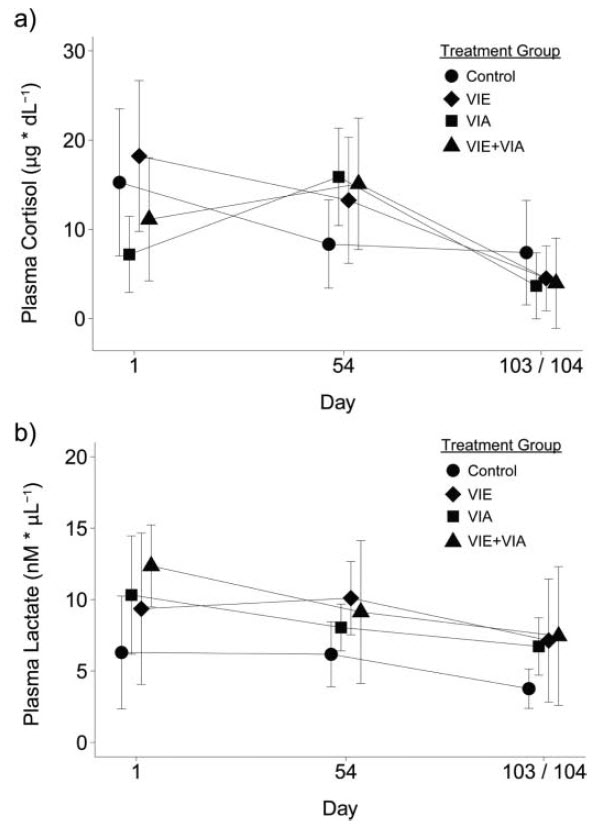Abstract:
Visible implant tags are commonly used in fisheries research to mark individuals or batches of fish as part of movement and mark–recapture studies. To be effective, these tags generally need to have high retention rates and little impact on the behavior or physiology of the marked individuals. We tested the retention rates of both visible implant elastomer (VIE) and visible implant alphanumeric (VIA) tags in 80–139-mm Western Silvery Minnow Hybognathus argyritis over a 104-d period. We also measured plasma cortisol and lactate to determine the impact of tagging on stress levels. We found that VIE tags had 100% retention and did not cause a significant increase in plasma cortisol levels, though plasma lactate levels were elevated in VIE treatment groups. Overall, VIE tags were found to be suitable for marking Western Silvery Minnow and similar species. Visible implant alphanumeric tags had 36% retention over 104 d and did not cause significant increases in plasma cortisol, though plasma lactate was elevated in the treatment group with both VIE and VIA tags. Given the high retention rates and low stress effects, VIE tags appear to be more beneficial for use with Western Silvery Minnow and similar-sized cyprinids.
Citation: Neufeld, K.*, Blair, S., and Poesch, M.S. 2015. Retention and stress effects of visible implant tags when marking Western Silvery Minnow Hybognathus argyritis and its application to other cyprinids (family Cyprinidae). North American Journal of Fisheries Management 35: 1070-1076.
Average Western Silvery Minnow (a) plasma cortisol and (b) plasma lactate concentrations for the various tagging treatments (VIE – Visual Implant Elastomer, VIA – Visual Implant Alpha, VIE+VIE – both) for days 1, 54 and 103/104. Error bars represent SD.

Also Read:
*Lab members: Kenton Neufeld, Mark Poesch. Check out opportunities in the lab!

